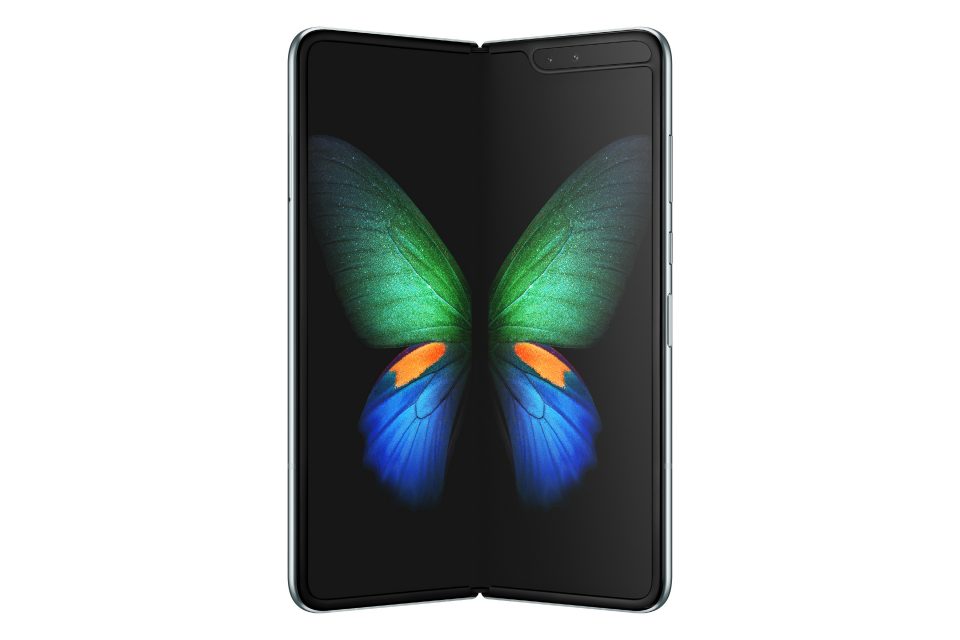Samsung revealed their folding phone last year in November to developers and we were waiting to see it in detail of what they were working on. This was finally done on 20th where they gave the new form factor a new name: Galaxy Fold.
Overview
The Galaxy Fold is thick, no contest about that. It looks like the classic Nokia 9500 communicator sans the physical keyboard. The front features a 4.6 inch AMOLED HD+ display, while on the inside, there is a huge 7.3″ AMOLED QXGA+ display when you open it fully.
Samsung did not skimp on specs either. It shares a lot of specs with the regular Galaxy S10 family. It shares the same processors, same dual 10MP main and 8MP depth selfie cameras, same triple rear cameras (16MP ultra wide, 12MP regular and 12MP telephoto cameras), 12GB of RAM and 512GB of storage. It has a huge 4,380mAh battery and features wireless charging.
The Galaxy Fold has great specs on paper and it is rightfully so since Samsung has given it premium pricing. The whole shebang will cost you a hair under $2000, which is enough to buy a Galaxy S10 and a Galaxy S10+ plus change.
Samsung positions this form factor as a way of combining a tablet and a smartphone so that you get one device instead of two. For normal smartphone functions, you use the smaller screen and if you want to browse the world wide web, play games or watch videos, you use the bigger screen.
The problem
However there is a problem with this move to foldable smartphones. At their current setups, they do not inspire people to switch, like what happened in 2007.
When the iPhone was first introduced in 2007, it solved a problem. It introduced a form-factor that allows you to use a touchscreen to surf the web and listen to music in a new way. This made Google to change how Android was coded and opted for the touchscreen layout other than Blackberry.
Smartphones became a phenomenon since they replaced a lot of things in our lives like dedicated music players, compasses, GPS receivers, watches, landlines, point and shoot cameras etc.
The next major change was with the original Samsung Galaxy Note which made phones with big screens cool again. These ‘phablets’ mirrored the advantages of having a tablet (huge screens) while still being generally pocket-able.
In 2019, we are now seeing companies trying this form-factor of having foldable smartphones that aim to make a weird smartphone-tablet hybrid. The Galaxy Fold is part of the first gen foldable smartphones that were announced late last year. We have seen three distinct foldable smartphone form factors: screen folding outwards (Royole), double folding screen (Xiaomi) and the clamshell with an inner folding screen (Galaxy Fold).
They all suffer from these problems:
- Phablets do the work they are claiming to solve rather well so people don’t see the need to switch
- These foldable phones are bulky, for now since they are first gen products.
- They are expensive. The Galaxy Fold is $1,980 and the Royole FlexPai goes for upto $1469. They are more expensive than most mass produced smartphones and tablets we find today.
- We are yet to see one design for this form-factor that rules them all. The Galaxy Fold and the Royole FlexPai fold either way and they make the device seem really bulky compared to our thin phones. Xiaomi’s folding smartphones seems to have solved this one with a double folding aesthetic but that design brings about other issues like how they deal with ghost touches on the folded parts of the screen.
There are also some issues that you may not immediately notice with foldable smartphones like the Galaxy Fold:
- The cost of repairing one will be insanely high since you expect the likes of Samsung to sell them in limited quantities.
- Samsung showed a slightly reworked UI for the Galaxy Fold which includes app continuity and multi active window which further complicates the update process.
- You are also unsure of how long the phone will be supported by Samsung in the long run.
Target market
These phones are targeted towards people that love being the first to try out a new technology. For now, the Galaxy Fold seems like a collectors item. It is a testament what we will see in the future of foldable smartphones and it will seem so strange a decade from now like how we view old Nokia phones that ran Symbian.
The only way for the current generation of foldable phones is them being significantly thinner than the current versions and finding new ways to interact with the content we are consuming. As of now, regular candybar smartphones will rule and we are only left to be wowed by the Galaxy Fold’s looks and its price.


































